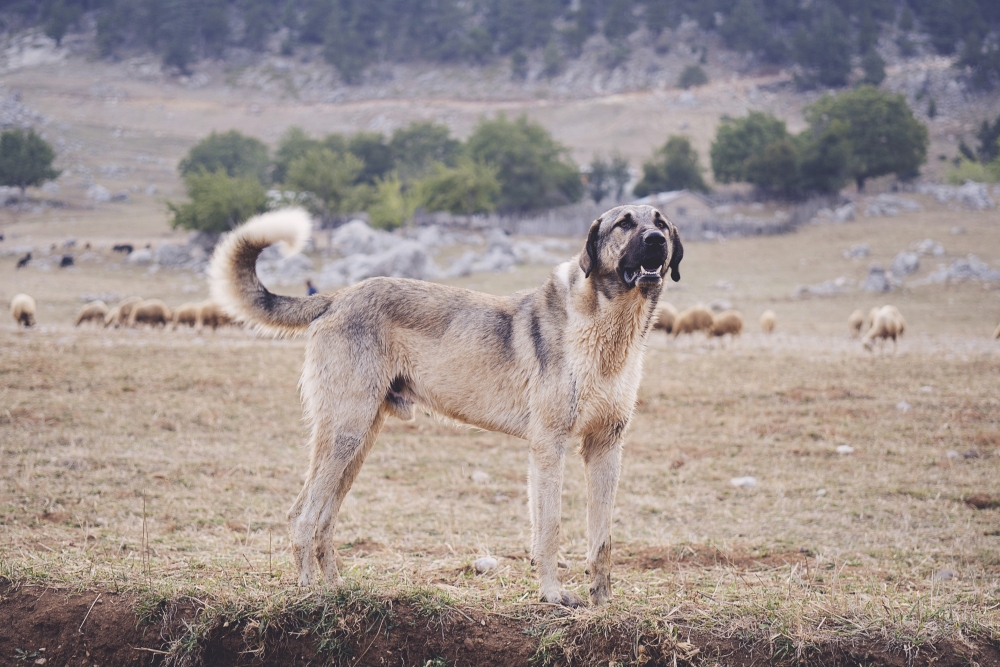
A Bigger Good Boy


We’ve known for some time that dogs were domesticated from wolves in Eurasia at least 12,000 years ago. One of the mysteries, however, is how they changed physically and became specialized for tasks like guarding and herding in prehistory.
Now, a paper co-authored by UC Santa Barbara researchers examines archaeological data to argue that when Neolithic farmers spread into Europe, they brought dogs with them that became larger in the Bronze and Iron Ages. What’s more, remains from the eastern Adriatic region of present-day Croatia strongly suggest that changes in the dogs’ bodies reflect an evolution in the relationship between those early canines and humans.
“We tend to think of human-dog relationships as static through time, but what we found is that there appears to be a shift in how humans interacted with dogs even in these small-scale farming societies,” said Sarah McClure, an associate professor and chair of the Department of Anthropology. “We argue in the paper that this shift is likely the result of changes in multispecies relationships — humans, sheep/goats and dogs — and how they are intertwined.”
McClure explained that the changes in the use of dogs for managing livestock also shifted the selective pressures on the dogs themselves, and humans likely began breeding dogs differently to select for traits that help with livestock guarding and herding.
“So the change in relationships between species (humans, dogs, sheep/goats) also resulted in biological changes in dogs that we can measure by analyzing bones from archaeological sites,” she said.
Indeed, the researchers’ ability to estimate body mass in the absence of more complete remains is a game-changer in piecing together dogs’ development over time. Previously, shoulder height was used to evaluate changes in dog populations. But it’s rare to find remains complete enough to make that sort of assessment.
McClure said the work of Martin H. Welker of the University of Arizona, the paper’s lead author, has made such evaluations possible.
“This is work that Martin has been developing over the years, building on established methods in analysis of animal remains,” she said. “Estimating body size from scattered bone fragments is really exciting and is precisely what allowed us to determine the changes through time in addition to the cut marks and differences in diet we identified through stable isotopes.”
Nick Triozzi, a UCSB anthropology Ph.D. candidate who contributed to the study, said stable isotope analysis alone didn’t reveal much about the development of our relationship with dogs. But the bigger picture came into focus when Welker compiled a broader array of stable isotope data and examined physical changes in dogs from Croatia spanning several thousand years.
“These changes in diet and physical size are particularly compelling within the context of what we have learned about subsistence and economy through archaeological investigations,” Triozzi said. “So what is really neat about the paper is how the lab analyses and the archaeology were combined to tell us more about how human-dog interactions have developed through time. As humans became more reliant on raising larger numbers of livestock, humans found a new use for the dogs that previously served to protect livestock from predators.”
The development of pastoralism also appears to have played a significant role in the size of dogs. The paper suggests that their greater size is correlated with increased transhumance — moving livestock between pastures based on season. As the practice increased in the Bronze and Iron Ages, the archaeological record shows, dogs became larger. Additionally, isotopic analysis revealed dogs were eating what humans ate after the Neolithic, suggesting a closer relationship between the two species.
“These new activities created a different need for what a dog should look/act like to fulfill that function,” McClure said. “It created selective pressures that resulted in larger dogs becoming more common among these small-scale farmers who had larger herds they were moving and guarding, expanding the different types of dogs among human communities.”



